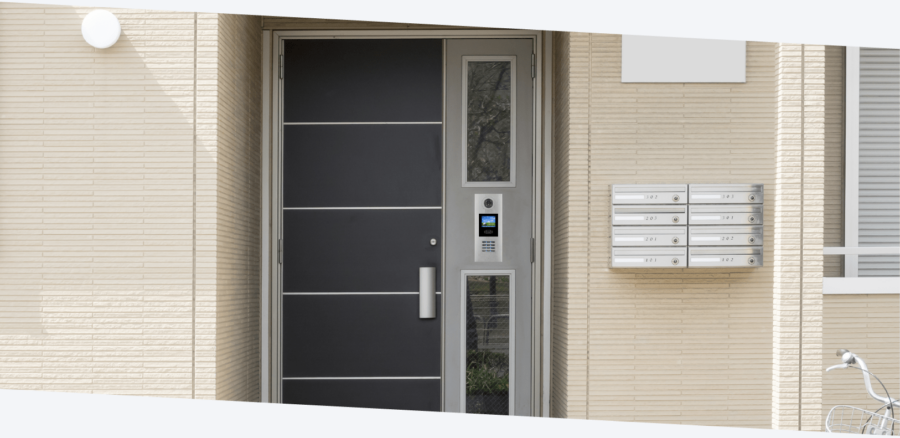Video entry systems are common solutions for controlling access to apartment blocks, gated communities, single residencies, and commercial premises. There are two common types of systems: wired and IP. Both have advantages and disadvantages for different buildings.
What are video entry systems?
The goal of video entry systems is to facilitate communication between people inside a building and visitors at the door. They are particularly useful when the entrance door to a building is a long way away – for example in an apartment block it could be many floors below the resident’s home. Visitors can initiate a call with a resident, who can speak to the visitor before remotely unlocking the door to grant them access. Video entry systems give residents the power to see and speak to visitors before letting them enter, improving security and peace of mind for the community.

How do wired video entry systems work?
Wired video entry systems involve, as the name suggests, more wiring. They rely on dedicated cabling between each door station and monitor to connect up the system. This technology has been around longer than its IP counterpart. The amount and complexity of cabling required depends on the particular system that is installed.
Benefits of wired video entry
Wired intercom systems are a tried and tested traditional technology. Because they don’t rely on internet connectivity to work, they can be seen as more reliable than IP systems. Because they use independent cabling for communication between door stations and monitors, wired systems typically display lower levels of latency, making communication as real-time as possible. The separate wiring of a traditional video entry system also means there’s less risk of hacking through the internet, and the network’s bandwidth isn’t impacted by the system.
In terms of installation, a wired system may be simpler than an IP system. If it’s a large building with complex networks in place, a separately-wired system might make for an easier installation. For smaller projects, wired systems are often also the most cost-effective solution.

Benefits of IP video entry
IP video entry utilises the internet, which comes with its own added benefits. For example, IP systems can be accessed remotely from anywhere with an internet connection. That means residents can speak to visitors and even grant access when they’re not at home. In addition, IP systems are more easily integrated into other networked smart home systems.
Because IP video systems use network cabling to transmit data and communication, they can be less disruptive to install. If the building already has network cabling in place, the video entry system can be added to it, rather than needing all new cabling for a wired system. Video quality in an IP system is also typically better.
For larger projects, IP systems also offer better scope for scalability. New devices can be added to the same network with limited disruption, as the Ethernet cables will be installed anyway.
Wired or IP video entry systems: what’s right for you?
Choosing between wired or IP video entry systems depends on a number of different factors. The size, scale, and priorities of each project will be different. For a large apartment block retrofitting the system, the ease of installation and lack of added wiring required may make IP the more suitable choice. However, for a new-build office building, network security might be more important. A wired solution would meet this requirement and cables could be laid during the build process to reduce disruption.
When making the choice, installers and end users should discuss their priorities for the project. Different systems offer different features. Budgets may impact the scope of projects. In existing buildings, the network infrastructure in place might push the decision one way or another.

In summary, opting for either a wired or IP video entry system will improve the security of a building. It’s the details that will influence which specific type of solution you choose.
